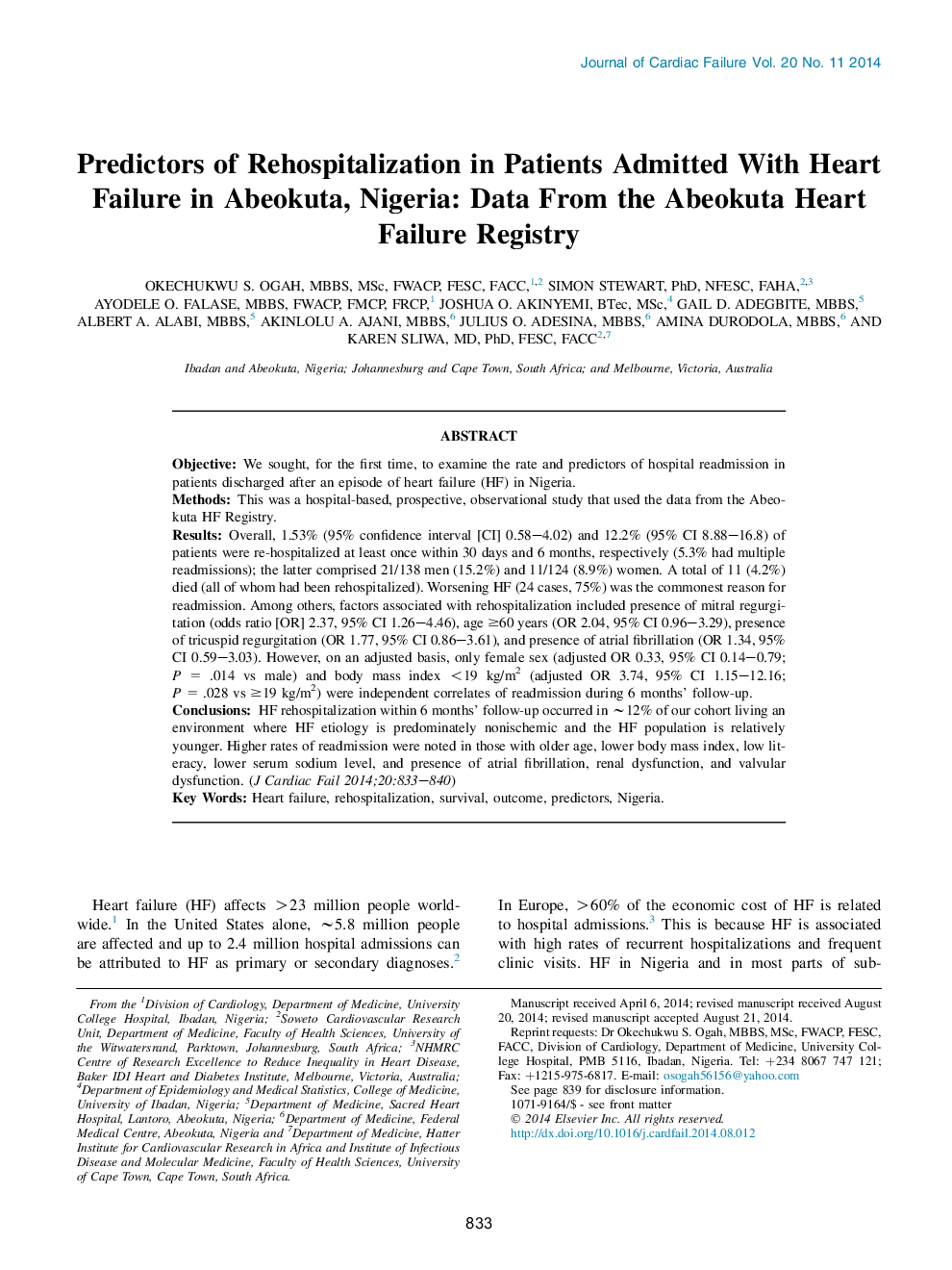| Article ID | Journal | Published Year | Pages | File Type |
|---|---|---|---|---|
| 5983776 | Journal of Cardiac Failure | 2014 | 8 Pages |
â¢We sought, for the first time, to examine the rate and predictors of hospital readmission after an episode of heart failure (HF) in a Nigerian city.â¢HF rehospitalization within 6 months' follow-up occurred in â¼12% of subjects in our cohort.â¢Higher rates of readmission were noted in those with older age, lower body mass index, illiteracy, lower serum sodium level, and presence of atrial fibrillation, renal dysfunction and valvular dysfunction.â¢Sex and body mass were independent correlates of readmission during 6 months' follow-up.
ObjectiveWe sought, for the first time, to examine the rate and predictors of hospital readmission in patients discharged after an episode of heart failure (HF) in Nigeria.MethodsThis was a hospital-based, prospective, observational study that used the data from the Abeokuta HF Registry.ResultsOverall, 1.53% (95% confidence interval [CI] 0.58-4.02) and 12.2% (95% CI 8.88-16.8) of patients were re-hospitalized at least once within 30 days and 6 months, respectively (5.3% had multiple readmissions); the latter comprised 21/138 men (15.2%) and 11/124 (8.9%) women. A total of 11 (4.2%) died (all of whom had been rehospitalized). Worsening HF (24 cases, 75%) was the commonest reason for readmission. Among others, factors associated with rehospitalization included presence of mitral regurgitation (odds ratio [OR] 2.37, 95% CI 1.26-4.46), age â¥60 years (OR 2.04, 95% CI 0.96-3.29), presence of tricuspid regurgitation (OR 1.77, 95% CI 0.86-3.61), and presence of atrial fibrillation (OR 1.34, 95% CI 0.59-3.03). However, on an adjusted basis, only female sex (adjusted OR 0.33, 95% CI 0.14-0.79; P = .014 vs male) and body mass index <19 kg/m2 (adjusted OR 3.74, 95% CI 1.15-12.16; P = .028 vs â¥19 kg/m2) were independent correlates of readmission during 6 months' follow-up.ConclusionsHF rehospitalization within 6 months' follow-up occurred in â¼12% of our cohort living an environment where HF etiology is predominately nonischemic and the HF population is relatively younger. Higher rates of readmission were noted in those with older age, lower body mass index, low literacy, lower serum sodium level, and presence of atrial fibrillation, renal dysfunction, and valvular dysfunction.
